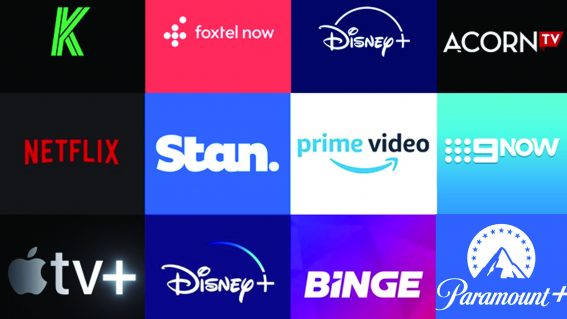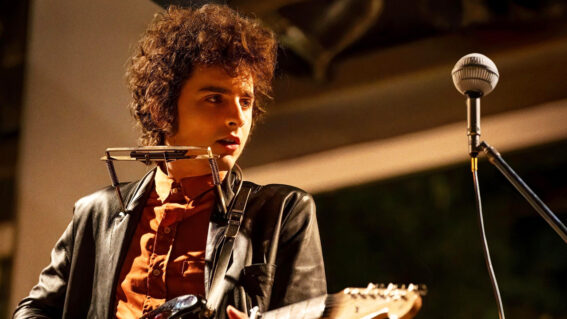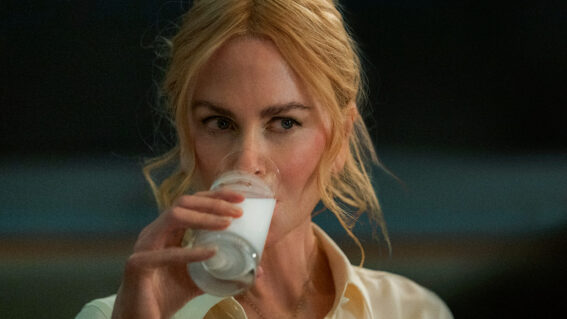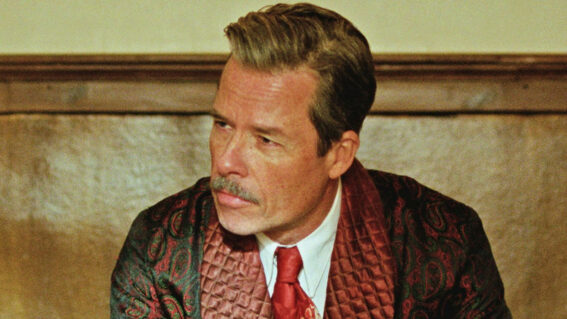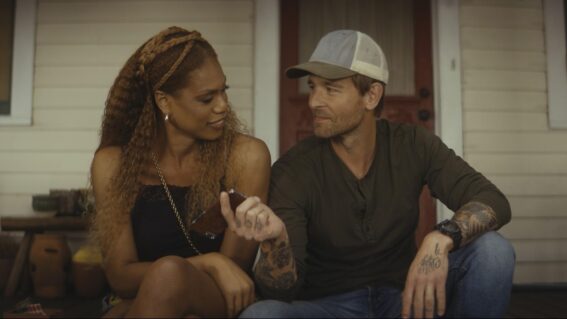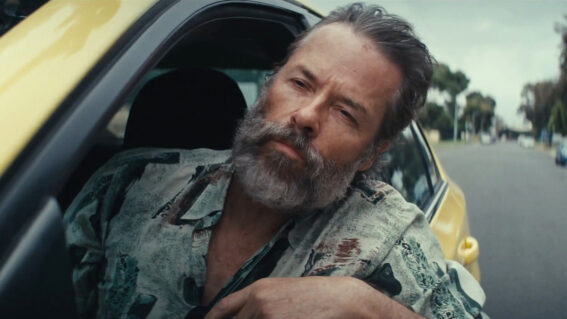The DC Animated Universe titles aren’t just good superhero stories — they’re the world’s finest
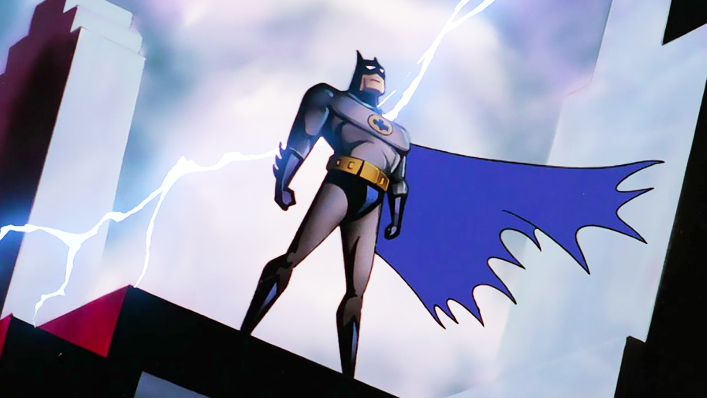
Without the expansive, interlocking world of the DC Animated Universe, there would be no Marvel Cinematic Universe dominating our screens today. Travis Johnson celebrates the awesomeness of the DCAU, now available to stream on Stan.
A metric ton of DC superhero content just landed on Stan. For the discerning comics dork an impressive degustation of DC delights awaits: Tim Burton’s Batman movies and Zack Snyder’s Man of Steel and Batman V Superman: Dawn of Justice for the live action fans, a host of animated adaptations of crucial graphic novels for cartoon lovers, including Batman: Year One and All Star Superman.
See also
* All new movies & series on Stan
* All new streaming movies & series
But the real juice, which should have the young and the young at heart sitting forward in their seats, is the sudden appearance of a good chunk of the DC Animated Universe. We’re talking all of Batman: The Animated Series, all of Superman: The Animated Series, two seasons of Justice League, plus the feature films Batman: Mask of the Phantasm and Batman: Mystery of the Batwoman.

This is the good stuff—years before Nick Fury clued Tony Stark into the Avengers Initiative, the DC Animated Universe presented us with a whole, integrated, holistic superhero universe on screen. However, being in cartoon form it flew under the radar of most audiences. But you, ya lucky so-and-so, can now plunge right into the bright, four colour heart of the DCAU.
It was a dark and stormy night
Having said that, the origins of the DCAU were markedly darker — or at the very least, involved the Dark Knight. Developed concurrently with Tim Burton’s Batman Returns and deeply indebted to the goth-in-chief’s eccentric style, Batman: The Animated Series was a stand-alone when it launched in 1992. Created by Bruce Timm and Eric Radomski, the series struck a balancing act, adopting a noirish visual style and narrative tone, but still being kid-friendly.
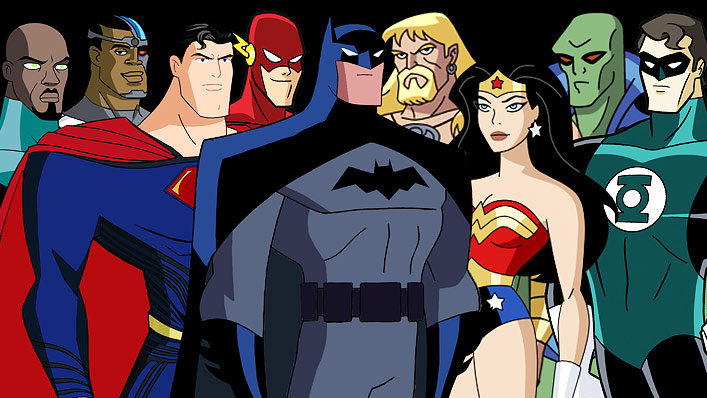
Timm and Radomski, along with artist and writer Paul Dini, presented us with a timeless, art deco-inspired Gotham City, all inky shadows and teetering vertical lines, stalked by a Batman (Kevin Conroy) who was dark and driven, but not the murderous psychopath of some later interpretations.
Also along for the ride was Batman’s supporting cast: Robin (Loren Lester), Alfred (Efrem Zimbalist Jr.), Commissioner Gordon (Bob Hastings), and Batgirl (Melissa Gilbert. But the real fun has always been the Caped Crusader’s rogues’ gallery, and here we got the lot: Two Face (Richard Moll), the Penguin (Paul Williams), Catwoman (Adrienne Barbeau), Ra’s al Ghul (David Warner), Clayface (Ron Perlman) and, in a masterpiece of voice casting, Mark Hamill as the Joker. This series also introduced fan fave Harley Quinn (Arleen Sorkin), who was later folded into comics continuity and eventually live action in the form of Margot Robbie.
Even here, though, the series was hinting at the existence of a bigger universe outside of Gotham, with appearances from cowboy hero Jonah Hex (Bill McKinney) and magician Zatanna (Julie Brown). But the world really opened up with the appearance of a strange visitor from another planet…
Enter the Big Blue Boy Scout
Superman: The Animated Series debuted in 1996, carrying across Batman’s distinctive art style but dropping the darkness, giving us a bright, retro-futuristic Metropolis for the Man of Tomorrow to patrol. Once again, the voice talent was insanely good, with Tim Daly as Supes/Cark Kent, Dana Delaney as Lois Lane, and, in another bravura bit of villain-casting, Clancy “The Kurgan” Brown as Lex Luthor.
Like the Batman series before it, Superman is a masterpiece of what we might call synthesis. Comics are unwieldy things that, when successful, run for decades and end up covered in the fingerprints of countless creators, each with their own take on the property. The DC Animated Universe cut through years of crusted-on continuity like a Gordian Knot, keeping the core characteristics and certain other elements, and jettisoning others. In Superman, for example, the origin of the evil supercomputer Brainiac (Corey Burton) is tied to the destruction of Krypton. It makes for a sleeker, more manageable story experience while still allowing for the introduction of wilder elements without getting bogged down in continuity.
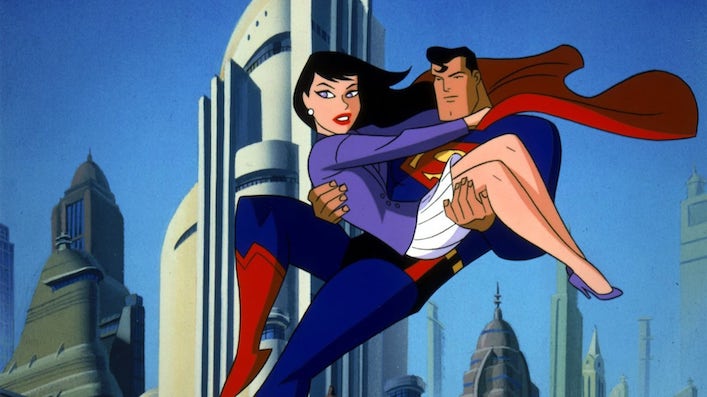
The DCAU has its own internal continuity, of course, and Batman and Superman crossed paths a number of times. The best of the bunch is their first meeting in the 1997 three part story “World’s Finest”, in which they each deduce the other’s secret identity — while Batman plants a tracer on Superman’s cape and follows him to Clark Kent’s apartment, Supes simply uses his X-ray vision. Other elements of the wider DC Universe, including the Green Lanterns and Aquaman, also debuted in Superman, but the real Golden Age of the DCAU was a few years away…
A cast of thousands
What took Zack Snyder four hours, the DCAU team knocked off in a 2001 triple episode: bringing together all the major DC heroes and forging them into the Justice League. In addition to Supes and Batman, we get Wonder Woman (Susan Eisenberg),The Flash (Michael Rosenbaum, who was Lex Luthor in Smallville), the John Stewart Green Lantern (Phil LaMarr), Hawkgirl (Maria Canals-Barrera) subbing in for Hawkman to bring some gender diversity, and the Martian Manhunter (Carl Lumbly, recently seen in The Falcon and the Winter Soldier). And in addition to them we get…
…everyone.
I am not kidding, gang. The true joy of these big interlocking fictional universes is that, well, they are big and interlocking. Anyone can meet anyone. Wanna watch Hulk smack the crap out of Deadpool? It’s do-able. Wanna watch every single DC hero and DC villain on screen at the same time? Justice League (and especially Justice League Unlimited, the follow up series) has you covered. Batman and Superman and Green Arrow and The Question and Shining Knight and Booster Gold and Rocket Red and Etrigan… I could go on.
Michael Ironside turns up as Darkseid, reprising his role from Superman. Rob freakin’ Zombie is Cthulhu (or a reasonable facsimile thereof). As Justice League continued, the show delighted in broadening the scope, delving into the weirdest and most obscure corners of comics lore to find gold. If you’ve ever wanted to see the Warlord of Skartaris in all his animated glory, or see Superman’s heroes and Lex Luthor’s villains team up to fight Darkseid, it’s all here.
And it’s all great.
Yes, true, we are steeped in superhero films and TV right now, and maybe these 20+ year old cartoons don’t sound as impressive as the portal scene in Endgame, but hand on my heart: no DCAU, no MCU. The blueprint for big screen superhero shared universes was sketched here. Pound for pound, in terms of ambition, charm, character, and sheer sense of wonder, the DCAU can hold its own against any of the recent big screen glut. It’s the gold standard of onscreen superhero entertainment.
Actually, scratch that. It’s the world’s finest.

